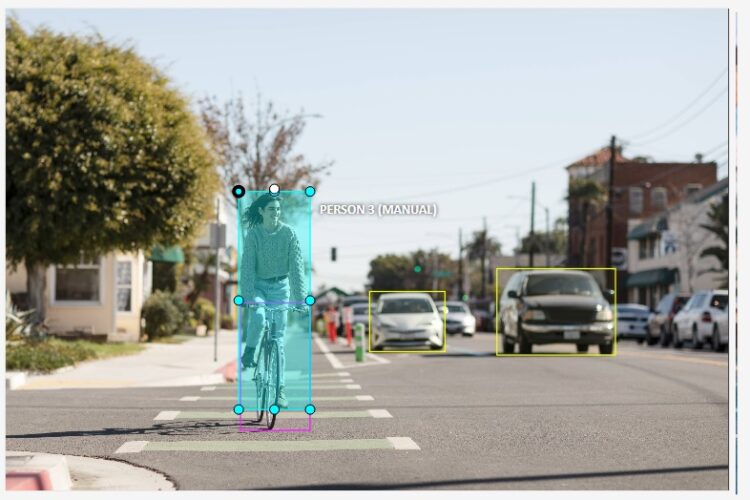Why Data Annotation is Crucial for AI and Machine Learning
Why Data Annotation is Crucial for AI and Machine Learning
Artificial Intelligence (AI) and Machine Learning (ML) have revolutionized various industries, from healthcare and finance to autonomous vehicles and e-commerce. However, the success of AI and ML models largely depends on high-quality, annotated data. Data annotation plays a fundamental role in ensuring that these models learn effectively, make accurate predictions, and improve performance over time. In this blog, we explore why data annotation is crucial for AI and ML applications and how it impacts different domains.
1. Enhancing Model Accuracy
AI and ML algorithms rely on labeled data to recognize patterns, classify objects, and make predictions. Without properly annotated data, models may misinterpret information, leading to inaccurate results. High-quality data annotation ensures precise categorization, improving the accuracy and reliability of AI applications across multiple industries, such as finance, healthcare, and autonomous systems.
2. Enabling Supervised Learning
Supervised learning, one of the most widely used ML techniques, requires labeled datasets for training. These datasets act as a foundation for models to learn from past examples and generalize patterns for future predictions. Without labeled data, supervised learning models would struggle to function effectively. Annotation techniques such as text tagging, bounding boxes, and semantic segmentation help create structured training data that enables AI models to perform optimally.
3. Improving Object Detection and Recognition
In applications such as facial recognition, self-driving cars, and medical imaging, AI models must accurately detect and recognize objects. Data annotation helps label images, videos, and texts, enabling AI to distinguish between different elements and make intelligent decisions. Techniques like bounding boxes, semantic segmentation, and landmark annotation contribute to superior object detection. For example, in medical diagnostics, annotated MRI scans help AI detect anomalies with high precision.
4. Reducing Bias in AI Models
Bias in AI can lead to unfair and inaccurate outcomes. Poorly annotated or unbalanced datasets can reinforce biases present in training data. Proper annotation practices, including diverse and representative datasets, help mitigate biases and ensure fair AI model predictions. Ensuring diversity in annotation teams and using unbiased labeling techniques improve the fairness and inclusivity of AI solutions, reducing potential ethical concerns in AI-driven decision-making.
5. Enhancing Natural Language Processing (NLP)
Natural Language Processing (NLP) applications, such as chatbots, speech recognition, and language translation, require accurately labeled text and audio data. Annotation tasks like entity recognition, sentiment analysis, and part-of-speech tagging are essential for training NLP models to understand and process human language effectively. Properly annotated NLP datasets improve AI’s ability to interpret slang, accents, and contextual meanings, making virtual assistants and chatbots more human-like and responsive.
6. Supporting Autonomous Systems
Self-driving cars, drones, and robotic automation depend on annotated data to navigate safely and make real-time decisions. Precise annotations, such as lane markings, traffic signs, and obstacle detection, allow AI models to function effectively in dynamic environments. Without properly labeled data, autonomous systems could misinterpret surroundings, leading to potential accidents or system failures. For instance, an autonomous vehicle trained with inaccurately labeled road signs might fail to stop at intersections, posing safety risks.
7. Enabling Continuous Learning and Model Improvement
AI models require continuous updates and refinements to stay effective. Ongoing data annotation helps retrain and fine-tune models, ensuring they adapt to new scenarios, trends, and user behaviors. This iterative learning process enhances model performance and long-term accuracy. For example, AI-powered recommendation systems in e-commerce platforms constantly refine their predictions based on user interactions and updated product annotations.
8. Application in Multiple Industries
Data annotation is essential across diverse industries:
- Healthcare: AI-powered medical diagnosis relies on accurately labeled data, such as annotated CT scans and X-rays, to detect diseases and recommend treatments.
- Finance: Fraud detection systems use labeled transaction data to distinguish between legitimate and fraudulent activities.
- Retail and E-commerce: Product recommendations and personalized marketing campaigns depend on annotated customer preferences and browsing history.
- Manufacturing: AI-driven quality control systems rely on annotated images to detect defects in products before distribution.
Conclusion
Data annotation is the backbone of AI and ML development, enabling models to understand, interpret, and analyze real-world data effectively. Whether for image recognition, NLP, or autonomous systems, high-quality annotation ensures better accuracy, fairness, and adaptability. Businesses and AI-driven enterprises must invest in robust data annotation strategies to maximize the potential of their AI applications.
Need high-quality data annotation services? Outline Media Solutions provides expert annotation solutions to enhance AI and ML model performance. Contact us today to learn more!



